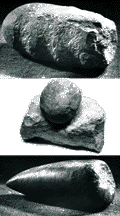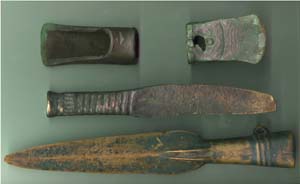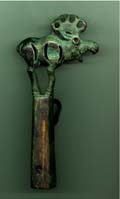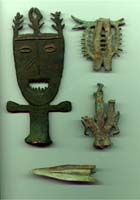
The sections is prepared with the support of the OSI "Assistance fund" The grant IEA70Eu
| Copper and polymetal ores were worked in Altai even in ancient times, which is indicated by the so-called "Chudskie mines", the traces of ancient miners' work - dumps of rock, collapsed galleries. The origin of the "Chudskie mines" dates back to the second half of the 3 millennium B. C. when the first metallurgy centres appeared in the South Siberia. The mineral wealth of Altai favoured it. |
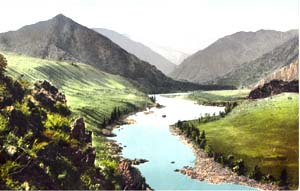
Postcard. Altai. Beginning of XX c. |
||
| The first information about ore wealth of Altai was received in Moscow from russian explorers in XVI - XVII c. In XVIII - XIX c mining engineers ( I. I. Leibe, I. F. German, P. S. Palass and others ) gave a discriptions of the "Chudskie mines". They noted that having found deposits of gold, silver, copper ancient miners extracted rich ores of upper layers and threw out rocks and poor ores into the dumps. |
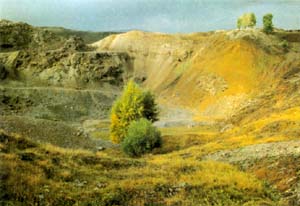
A modern territory of Zmeinogorsk is a settlement of ancient miners |
||
| Archeologists found stone tools for mining in the place of ancient mine workings. Especially many of them were found near the mountain Zmeeva ( the territory of Zmeinogorsk ). |
|
| The first bronze wares appeared in XVII - XV c B. C.. The period of XIV - XII c B. C. grew into the period of bronze epoch flourishing.The collection of the museum presents all the main types of bronze wares of that epoch: spears, daggers, knives, decorations. | |||
|
A large mining territory called Rudny Altay ( the Zmeinogorsky mine,
the Ridderskoe and Zyryanovskoe deposits... ) was discovered in the place
of ancient mine workings in XVIII c.
 |
